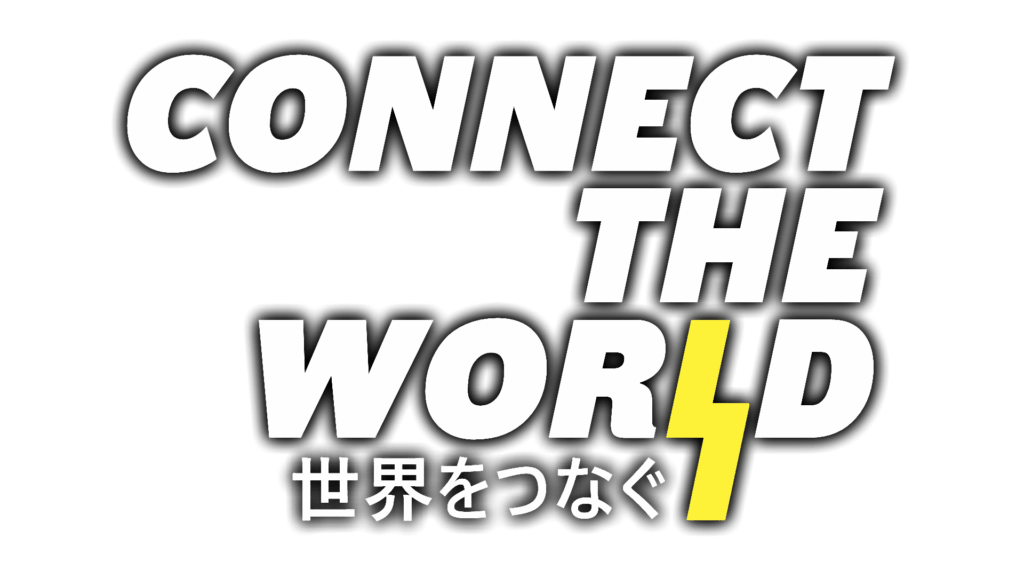
Olga Ukolova | Connect the World
This week, in Episode 31, we talk to Olga Ukolova, the co-founder & COO of Pandora Core and working for the LNP/BP Standards Association and MyCitadel.io.
At Pandora Core she’s busy developing RGB, a 2nd layer technology solution for scalable off-chain programmable digital assets and smart contracts running on top of the Bitcoin network!
We talk about the LNP/BP Standards Association where they oversee the development of industrial standards for Bitcoin and Lightning and drive adoption for censorship resistant infrastructure. Olga also shares her thoughts on yield generation, adoption and Taro. And last but not least she explains the MyCitadel software suite!


The Lightning Network
What was your first experience with the lightning network and do you still know what you did/saw at that moment?
It was with BlueWallet, just paying for some random stuff to a friend at some conference many years ago, soon after it was just announced. I must admit, I had no idea what Lightning was at that point from the technical perspective and I was sure I’d loose all the sats. But oh well, that didn’t happen and I was ‘Damn, ok, this thing probably works, at least to some extent. Interesting.’.
Switzerland is known for frontrunning innovations and also the adoption of bitcoin in certain parts of the economy, do you think swiss will be the first european country which adopts bitcoin as legal tender and if yes wheeeeeen?
No idea about that one and Switzerland, as liberal in this topic as it is, still has a lot of regulations that prevent the ecosystem and progress in the field to grow. I don’t expect it to become the ‘safe heaven’ of sorts soon, but in the current political frame – you never know, they do have the chance to bring back their power that was taken from them after 9/11 (banking secrecy and all).
We see more and more adoption of Lighting and Bitcoin in developing countries. What is needed to have more adoption in other countries where there is more competition with existing fiat systems?
In the more developed countries people are so used to surveillance, slow and inefficient work of banks, dictatorship that they don’t even see all that as a problem, thus they can’t accept Bitcoin and LN as a solution to that as basically they can’t answer the ‘solution to WHAT?’ question. And to do that people need education in the fields actually kind of irrelevant to Bitcoin and finance itself (math, philosophy, game theory, medicine etc) and then, when they realise the problems they have – get educated on Bitcoin. Another way to do it is a rapid change usually brought by revolutions. We actually see that now – many countries are collapsing now and having resolutions and protests. So, the peaceful possibility, probably, will not work any more. Hopefully, revolutions will wake people up and thus – help them use Bitcoin, LN, RGB for solving their problems.
The network is developing fast, but still could develop faster in a more efficient way.
What could be a solution to coordinate different developers with different ideas, timelines, roadmaps, business models in a more structured way.
Abolish woke and cancel culture and come back to the good old times of developing stuff, writing code, testing, exploring – my main remark here. ‘Cultural differences’ and brainwashing is the main obstacle I’ve faced.
Do you see Lightning and Bitcoin as a solution for all big problems in the world? For example the energy transition and the unfair distribution of wealth and power?
Bitcoin doesn’t fix human nature, but it can help with some other things 🙂
Imagine: Lightning suffers a large scale attack in the next two years. How would this happen? What would happen next? as in: in what scale is it gonna affect the adoption?
I don’t really care about the adoption, I care about progress more. Taking the current times of us entering the WWIII I think privacy-related technologies will by default be adopted and used by many. As long as guys like LL don’t create a closed ecosystem where the users would become hostages of it. But even for that situation – there are solutions built by us hehe.
With the LNP/BP Standards Association you work to oversee the development of industrial standards for Bitcoin and Lightning and to drive adoption for censorship resistant infrastructure. Why is it so important to develop these standards on top of Bitcoin and Lightning development?
If you look at how the specs in Lightning are currently put in place you’ll see that it’s even worse organised than a room of a teenager. Some standards overlap each other, some functionality is not covered at all etc. Thus, when devs or regular Joes read through the specs or GitHub issues they make a lot of mistakes, for example generalising the conclusions before digging deeper into the protocols and specs or on the contrary – not being openminded enough to start building something that has not yet been described in the text.
Thus, the importance here goes in multiple directions:
1 – Showing that if something has not yet been described in the specs doesn’t mean it’s not there in the idea, or rather, the potential of what the technology is capable of.
2 – Describing, finally, in proper terms, all of the functionality, layer by layer (not many people know that there’s Lightning Network which is very different from channels, from the protocol etc) of the techs and thus, opening up the full potential of it to every developer or simply lurking curious people.
3 – Helping developers and businesses to build their products in a better, more sustainable (in the normal, not woke sense of this word) way. I mean, Javascript-based solutions can be fancy, but they are often Trojan horses of your device, reading the data, feasting on the battery power etc.
4 – Creating a database of proven effort, not just claims or text, that would guide future thought and exploration narratives in the space.
Is the development of industry standards comparable to the developments on the internet standards as we know and use at this moment?
You can compare it in some ways of course, but they are different on the other hand.
MyCitadel is a suite of software, hardware and Internet services focused on digital individual sovereignty and privacy. MyCitadel wallet: mobile & desktop app, Mycitadel Node, Box & Cloud. MyCitadel Contacts & Chats
People have 3 different possibilities to run a node. Do they need to run a node to use the all the services in the future?
There are multiple different options: you will be able to run a node in a box (we’re partnering up with node for that), in a cloud, store it on Google drive, have a third party running it for you if needed etc. As long as you don’t lose the metadata on the assets you’re in possession of them.
If people run a Bitcoin and Lightning node at the moment, can they easily add a MyCitadel node?
So far you need to use our Rust implementation of the LN node called LNP Node, but you can use both our implementation of bitcoin node (BP Node) or Bitcoin core for the base layer.
We saw a great geeky picture on you Twitter feed from a Mycitadel.io workshop. How difficult is it to find new developers in this Space?
Depends on the level of professionalism/knowledge, language and goal. For us it’s been challenging as not too many people know Rust to the required extent.
What kind of layer 3 solutions will be the trigger for mass adoption? Defi, NFT, decentralize mobile apps, live stream (like Vimeo, youtube), podcast 2.0
Hard to say, everything is changing in the world now. I’d say private messaging should boost adoption taking into account our era of mass surveillance. BiFi (Bitcoin Finance) will help a lot, as it gives more tools for asset management, creating rights/access/ownership hierarchies of arbitrary complexity, create new types of DEXes and so on.
When thinking of a change to a multi-asset network: Do you think this will be a game changer to trigger mass adoption?
Well, Lightning Network is already a multi-asset network 🙂
But yes, I think that simple tandem of Bitcoin+LN does not cover the actual real needs of the users, thus what RGB, Storm and other protocols enable will boost the ecosystem a lot.
Support us in our mission
Do you like this article and our other content? Donate and support us in our mission to create a worldwide distributed Lightning Network by connecting countries around the world and bringing The Lightning News to you first!
Follow The Daily Moon also on Telegram and Twitter!
Pandora | RGB | Bitfrost

With Pandora you’re developing the Pandora Network, a 2nd layer solution for scalable smart contracts running on top of the Bitcoin network. And with the development of RGB & Bitfrost you’re designing a technology for scalable off-chain programmable digital assets and smart contracts. How does RGB exactly work?
I’ll need to spend a lot of time describing it as it’s different from ‘crypto’ things, Lightning Network and Bitcoin even. We have a YouTube channel , rgbfaq website and many other sources that can help with understanding the basics. This video in particular is the most comprehensive explanation so far.
Seeing Lightning as a working capital asset and earning yield could be very important for increasing adoption.
In the Netherlands we have a company called Amdax that mainly focuses on asset management of crypto assets. They focus on yield generation for the high segment. What possibilities are there for yield generation in the future with the use of RGB? And will this also be interesting for bigger companies to use as a working capital asset?
RGB brings even more possibilities to yield generation that LN does today. Issuing companies’ assets, managing them in automatic way with arbitrary complexity conditions, creating time lock bids etc will enhance the Bitcoin and Lightning finance world to a great extent.
For 2nd and 3rd layer solutions, privacy, scalability and functionality are very important! To ensure the smooth operation of Lightning as a 2nd layer, many people find it important not to offer too many different functions on Lightning. Is RGB as a solution next to Lightning the solution to this fear? And do you think this doubt is justified?
I’m not sure how exactly limiting the functionality can in any way ensure smooth operation. We created Bifrost – it’s an extension of Lightning Network, which is RGB-compatible and provides a lot of functionality to the LN itself. Its architecture is modular and enables a lot of use cases to be covered, more than the LN itself can now offer (and in a more robust way).
You once said that RGB is a layer 2 and 3 solution. What are possible layer 3 use case examples?
Algorithmical stable coins is one of the, also – a proper DEX on top of LN (new model of which will be enabled by RGB, Birfost, Storm and other protocols we have been building).
Lightning Labs worked on Taro, an open protocol (made possible by taproot) for transferring non-bitcoin tokens in Bitcoin transactions and LN payments. What are the biggest differences with RGB?
Well, Taro is 99% copycat of RGB. I don’t know of they have any code by now, but rewriting our docs and claiming they are the first to introduce assets-over-LN with client-side validation and Taproot did help them raise 70mil$ without even mentioning Peter Todd, Giacomo Zucco, Maxim Orlovsky and others that have been working on RGB for at least the past 3 years. We’ll see how it would work out. Would be a good gesture from them to give a public apology and spend a meaningful amount of the raised money not only on creating marketing hype, but also on supporting our work, as that can be a decent option if they don’t want to cooperate and choose to just copy others efforts.
RGB has a lot of use cases over Lightning. It can for example be used for AI computations and for manipulating company assets and shares. Do you think Ethereum showed us the market demands and RGB will be the answer for endless future use cases?
Kind of, yes. That’s our experience and thought narrative at least.
RGB is by design not a blockchain or a peer to peer network. Why is it that for releasing and using RGB there’s no need for updates in core protocol?
In the architecture of RGB we tried to leverage Bitcoin and LN strong points while reducing the impact of their flaws. Also, we didn’t want to pollute them both with the data from RGB. Thus, we used the concepts of client-side validation and single-use seals to on the one hand stay independent from them, but on the other – leverage the existing solutions. More about how RGB works can be found in one of our recent videos here https://www.youtube.com/watch?v=Uy-JH7eOkk4
You said in a podcast that people were skeptical about the release of RGB because it was taking so long. You also mentioned that RGB is aiming for both speed and quality and that it’s moving fast and efficiently! Can you explain what is still needed to bring the development further?
Right now we need highly skilled Rust developers most of all. Then of course, if some people would want to team up with us to write documentation etc – they can hit me up.
We would also appreciate financial support, as RGB is being developed under a non-profit LNP/BP Standards Association running on donations and our own personal funds, instead of being a startup backed by VC money. So if someone wants to become a donor – we are opened to it as well and it will help us a lot to speed us our effort, attract devs and other professionals and raise more awareness around our work.
You once worked with RSK Blockchain. What is the main difference with RGB?
Back in the day in Pandora we tried to build a decentralised and censorship-resistant heavy-load computation system. We tried RSK, but it did not fit our needs, as it was not scalable enough for such a system, it forced us (technically, by using Ethereal smart-contracts as L2) to introduce and manage gas & ETH which besically made the whole idea extremely expensive for the users, the code was written in JavaScript which from programming perspective was fragile and easy to hack etc. But the good thing is that this gave us the experience and knowledge on what flaws they and many other projects had and how to improve that. And so we did, with RGB – it is economy-scalable system, it’s private, it doesn’t introduce a native token or gas or whatever stuff, it leverages existing tech stack of Bitcoin, Lightning, Taproot and others Bitcoin improvements.
Smallworlnd of LNnodeinsight (we spoke with him in Episode 23) told us that he is following the RGB project, but still doesn’t fully comprehend it. Do you think RGB will develop in a core infrastructure standard which people will use and eventually not know what it is?
Yes, and it will be released in full by the end of the year 🙂
The initial RGB release as L2 solution is planned for late June this year.
With RGB you found a solution where all your fundamental demands were met instead of using Ethereum. You once said that the time dependency was a great problem to keep working with Ethereum. Do you think they will ever be at the same level as what RGB has to offer?
What’s the time dependency here? 🙂
And in any case – no, they will not offer what RGB can.
At least some things that we find essential as resistance to censorship, privacy etc.
In Episode 15 we spoke to Jack Everitt of THNDR Games. He said that LNURL is a layer 3 solution on top of Lightning. Will RGB also be used for “simple” payment transactions or only be suitable for specific assets?
RGB is not a token/asset protocol, it’s a full-fledged smart-contract system. It can be used for paying for streaming, for renting out servers, for setting up DAOs (however people define what a DAO is), managing rights to art and music and much more. So yes, it can also be used for THNDR Games’ case.
EXTRA
In 2021 you mentioned that there was a “perfect” use case for Bitcoin in a war situation like in 2014 in Ukraine. Now it’s 2022 and there is again an intense war. Can you share if and how it’s being used at this time?
Bitcoin, especially with the help of Lightning Network, Storm, Bifrost, RGB, makes it faster, cheaper and easier to transfer funds across the border to the most ‘in the middle of nowhere’ places of Ukraine, in a private manner. Also, this tech stack enables to create a private chat solution (one of which is MyCitadel chat application) that literally can save lives because your enemy will not be able to track your communication with your allies or detect your location.
To add to that, the above mentioned protocols are individual-centric, that do not require global coordination or synchronisation between the participants, which removes the single point of failure problem and makes the ecosystem more robust in war and peaceful conditions alike.
How important is self-sovereignty for you?
The only important thing that is worth spending your life on.
Tokenizing existing things such as USD, OIL, GOLD,… on layer 3 will that be the moment of truth for Bitcoin Network? BiFi (Bitcoin Finance)
Not sure what you mean by ‘the moment of truth’ but it can and will be used for those use cases to be run while having censorship-resistance, scalability and privacy in the core.
How do you see the future use of Lighting when you think of Liquid, LND and Core Lightning. Do you think is will be possible to combine the use of these distributions?
It’s not really a question to me as those technologies are built by corporations and it’s up to their business interests to decide on that.
How do you envision the future of Lightning and Bitcoin technology in the new internet 2.0?
I would want to see Bitcoin, LN and our protocols to build a new, individual-centric infrastructure and software, private, resistant to censorship and scalable. I am skeptical it will be achieved fast, as the amount of education and shift in paradigm will require a lot of time, effort and willingness from the users, but we will at least do our part in moving the world and ecosystem into that direction.

Laptopman


LNcapital, node management for professionals | Henrik Skogstrøm










